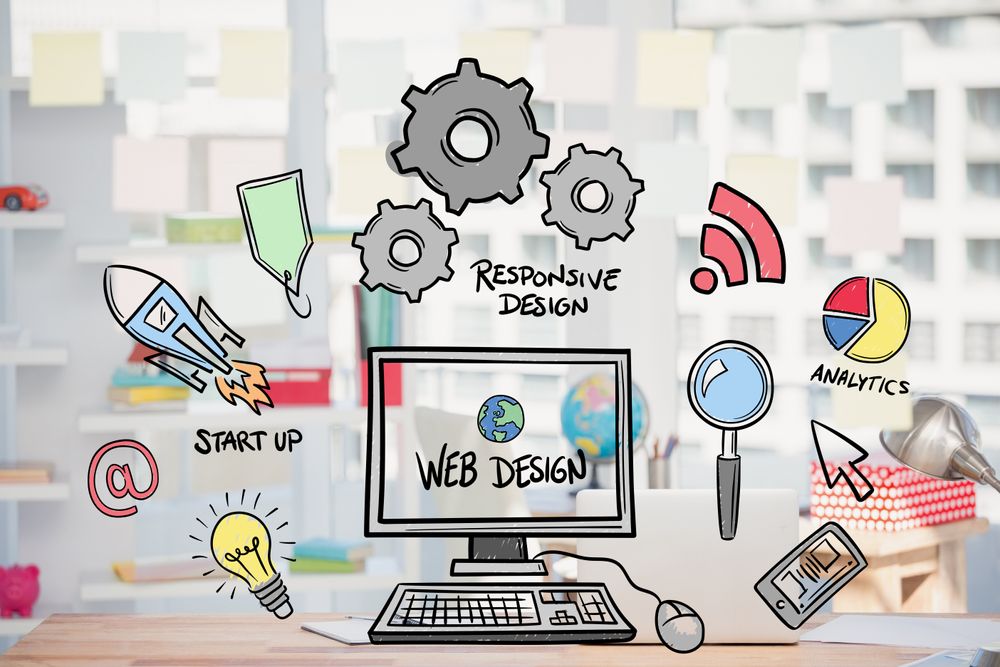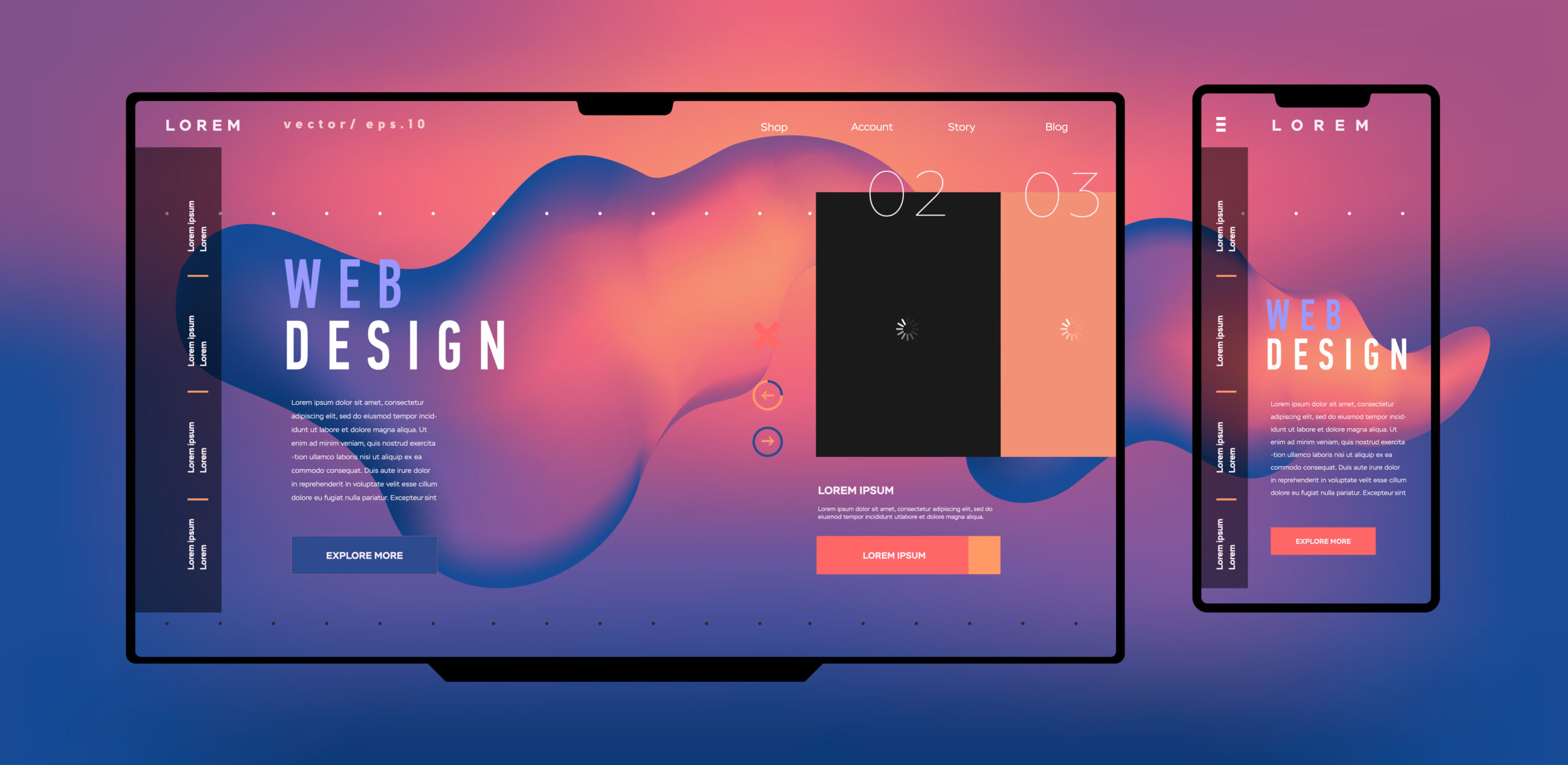How Ingenious Web Design Can Transform Your Brand Name Identification
Innovative web design plays a crucial function in forming a brand's identification. It serves as the electronic store front, influencing very first impacts and user involvement. Thoughtful layout selections can produce remarkable experiences and foster loyalty. Nonetheless, the impact exceeds looks. Understanding the underlying principles of effective web design can reveal its true possibility. What techniques may be employed to guarantee that a brand name not only stands apart yet likewise reverberates with its audience?
The Importance of First Impressions in Web Design
Just how crucial is a very first perception in the domain name of web design? It serves as the preliminary gateway to user involvement, figuring out whether site visitors will discover further or desert the website. A website's aesthetic and performance can greatly influence perceptions of a brand name's reputation and professionalism and reliability. In an age where digital communications are instant, individuals form opinions within seconds, making visual allure and user-friendly navigating vital.
An efficient impression can promote trust and encourage expedition, while a badly designed user interface may stimulate frustration and suspicion. Components such as color pattern, typography, and format all add to this initial understanding. Additionally, uniformity in design throughout all web pages strengthens brand name identification. Because of this, the value of very first impacts in web design can not be overemphasized; they not just dictate user retention but also effect overall user experience and fulfillment, ultimately shaping a brand name's online reputation in an affordable online landscape.
Key Aspects of Efficient Web Design
A website's efficiency rests on a number of crucial elements that work in consistency to create a positive user experience. First, instinctive navigation is essential, permitting individuals to find details effortlessly. Concise and clear web content improves understanding and interaction, while tactical use of whitespace protects against overwhelming the customer.
Responsive style is another important aspect, making certain that the internet site works well on various gadgets and screen sizes. Quick loading times are necessary; slow websites can lead to high bounce prices.
Visual aspects, consisting of premium photos and an enticing format, add to a visually pleasing experience that resonates with customers. Finally, accessibility should not be overlooked, as it guarantees that all users, regardless of capability, can engage with the site.
How Color Psychology Influences Brand Name Assumption
Shade psychology plays a pivotal function fit brand perception, affecting consumer emotions and actions in profound ways. Different colors evoke particular sensations; for instance, blue frequently shares count on and expertise, while red can elicit excitement or necessity. Brands strategically utilize these organizations to enhance their identity and attach with their target market.
A technology company could make use of a streamlined blue scheme to task integrity, while a food brand might decide for vivid reds and yellows to stimulate appetite and power. The consistency of color across numerous systems reinforces brand name acknowledgment and fosters loyalty

Enhancing User Experience Via Ingenious Functions
Numerous ingenious functions can significantly enhance user experience in web design, creating a much more user-friendly and interesting communication for site visitors. Interactive elements such as vibrant find out this here web content, animations, and receptive layout warranty that individuals remain astounded and involved. Including functions like chatbots can provide real-time help, enhancing communication and resolving user queries promptly.
Furthermore, personalized web content based on user actions promotes a customized experience, urging extended engagement. Ease of access functions, including voice navigation and display viewers, assure inclusivity for all users, additionally boosting general contentment.
Executing instinctive navigation, such as sticky menus and breadcrumb tracks, enables individuals to discover details easily, minimizing frustration. Furthermore, integrating micro-interactions, like subtle computer animations throughout switch clicks, can provide positive comments, strengthening user actions. Eventually, these cutting-edge functions work jointly to create a smooth and delightful user experience, greatly enhancing the overall perception of a brand name.
Case Studies: Brands That Transformed Their Identification Through Web Design
Internet design plays an essential role fit a brand name's identity, as evidenced by various business that have successfully redefined their image with ingenious on the internet experiences. A noteworthy example is Airbnb, which revamped its internet site to focus on storytelling and user-generated web content. This method not only improved user involvement but also reinforced its community-centric brand name identity.
The rebranding of Dropbox with a minimalist layout emphasized simpleness and capability, lining up perfectly with its use this link mission to make file sharing uncomplicated. The brand-new aesthetic identity promoted a trustworthy and modern-day image.
An additional situation is Mailchimp, which changed from a simple e-mail advertising device to a full-fledged advertising system. Its dynamic style and spirited images mirror a creative and friendly brand character, appealing to a more comprehensive target market.
These makeovers show how critical web design can substantially affect perception, eventually driving brand commitment and market growth. - web design company
Regularly Asked Concerns
Just How Much Does Cutting-edge Web Design Commonly Price?
Ingenious web design normally sets you back in between $2,500 to $15,000, relying on intricacy, features, and developer knowledge. Personalized remedies might surpass this variety, reflecting the financial investment in high quality and performance that enhances user experience.

What Are the Most Current Web Design Patterns to Watch?
The most recent web design patterns include minimalism, vibrant typography, dark setting, interactive elements, and immersive narration. These aspects boost user experience, making sure web sites remain interesting and aesthetically appealing in an increasingly electronic landscape.
How much time Does a Website Design Project Typically Take?
A website design task commonly takes in between 4 to twelve weeks, depending upon elements such as intricacy, customer comments, and the design team's work. Timelines may vary substantially based on specific job demands and goals.
Can I Upgrade My Site Without Shedding SEO Rankings?
Yes, a site can be redesigned without losing SEO positions. Mindful preparation, find out keeping URL structures, optimizing on-page elements, and updating backlinks assist preserve visibility in online search engine during and after the redesign process.
What Platforms Are Best for Carrying Out Ingenious Web Design?
Popular platforms for innovative web design consist of WordPress, Wix, and Squarespace. Each deals one-of-a-kind functions, templates, and customization choices, allowing customers to produce functional and aesthetically enticing sites that align with their brand identification.
Cutting-edge web design plays a necessary duty in shaping a brand's identification. Numerous ingenious functions can significantly boost user experience in web layout, producing a more intuitive and engaging interaction for visitors. Website Design Agency. Interactive components such as dynamic web content, animations, and responsive style warranty that users stay captivated and entailed. Internet layout plays a crucial function in shaping a brand's identification, as confirmed by different business that have successfully redefined their photo via cutting-edge online experiences. A web style project usually takes between four to twelve weeks, depending on aspects such as intricacy, customer responses, and the style team's work